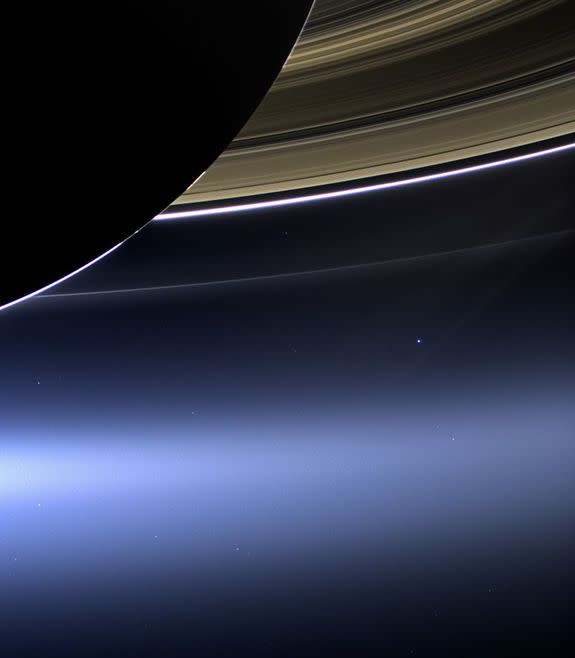This photo of Earth peaking out between Saturn's rings will make you feel small

We have an obsession with looking at ourselves from space.
So it should come as no surprise that we continue to turn our far-flung spacecraft homeward to see what we look like from way out in the solar system.
SEE ALSO: Extraterrestrial Oceans Could Host Life
A new photo taken by the Cassini spacecraft near Saturn shows Earth as a small speck of light, framed and dwarfed by Saturn's famous rings.

Image: NASA/JPL-CALTECH/SSCI
Cassini was 870 million miles away from Earth when it snapped this photo on April 12, according to NASA.
"Although far too small to be visible in the image, the part of Earth facing Cassini at the time was the southern Atlantic Ocean," NASA said in a statement.
Astronauts who fly to the International Space Station talk about how they spend their precious free time looking down at our home planet.
And yes, while the view from the Space Station is incredible, there's also something deeper about our love for it. Living above the Earth can actually shift your perspective of it.

Image: NASA/JPL-CALTECH/SSCI
Called the "overview effect" by some, looking down at our planet from far away helps you understand how tiny, fragile, and immensely important it is.
Only about 500 people have been to space and afforded this kind of view in person, but photos like the one taken from Saturn are, at least in some way, designed to bring that overview effect down to a wider number of people.
This isn't Cassini's first photo of Earth from Saturn. In 2013, the spacecraft snapped an incredible view of our home alongside our moon.
Other spacecraft have also taken photos like this from far-off parts of the solar system.
Perhaps the most famous of these photos is the "pale blue dot" image taken by Voyager 1 in 1990. That image shows Earth as a tiny fleck on a beam of sunlight from more than 4 billion miles away.

Image: NASA/JPL-Caltech
Mission controllers actually turned off Voyager's camera soon after the pale blue dot image was taken, shutting its eye on the solar system as it sped away from us toward interstellar space.
The new faraway Earth image is something of a goodbye for Cassini as well.
The mission — which launched from Earth in 1997 — is coming to an end in September when it makes a planned dive into Saturn's atmosphere, burning up in the process.
Before that happens, however, the spacecraft will navigate between Saturn and its inner-most rings, snapping photos all the way down and giving us a new look at an alien world not all that far from home.
